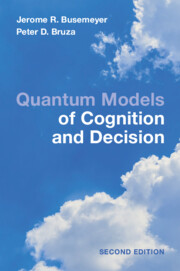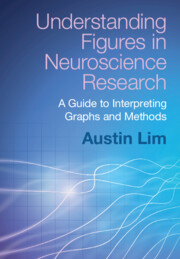Diffusion Process Models of Decision Making
Diffusion decision models are widely used to characterize the cognitive and neural processes involved in making rapid decisions about objects and events in the environment. These decisions, which are made hundreds of times a day without prolonged deliberation, include recognition of people and things as well as real-time decisions made while walking or driving. Diffusion models assume that the processes involved in making such decisions are noisy and variable and that noisy evidence is accumulated until there is enough for a decision. This volume provides the first comprehensive treatment of the theory, mathematical foundations, numerical methods, and empirical applications of diffusion process models in psychology and neuroscience. In addition to the standard Wiener diffusion model, readers will find a detailed, unified treatment of the cognitive theory and the neural foundations of a variety of dynamic diffusion process models of two-choice, multiple choice, and continuous outcome decisions.
- Presents a comprehensive treatment of the theory, mathematical foundations, and numerical methods for analysing and evaluating diffusion process models
- Combines introductory tutorials with advanced models to provide a comprehensive overview accessible for both students and professionals
- Develops readers' sense of the wide variety of experimental findings that can be characterised with diffusion models
Reviews & endorsements
'This is the first volume of a pair that will become the definitive books on diffusion process models of decision making. This book provides an outstanding introduction to the theory, both clear and rigorous, written by the leading experts in the field. A 'must buy' for every decision scientist.' Jerome Busemeyer, Distinguished Professor of Psychological and Brain Sciences, Indiana University Bloomington
'Philip Smith and Roger Ratcliff are the leading world researchers on evidence accumulation modeling, and have produced a definitive survey of the many variants of diffusion models and their respective merits. Every researcher in every field who would like to explain their response time and accuracy data with an evidence accumulation process should have this book on their shelves, and use it extensively.' Richard Shiffrin, Distinguished and Luther Dana Waterman Professor, Indiana University Bloomington
'This two-volume set on what is arguably the most compelling account of human information processing is an instant classic that will prove to be an indispensable guide for future generations of cognitive scientists. It is an absolute triumph.' Eric-Jan Wagenmakers, Professor at the Department of Psychological Methods, University of Amsterdam
Product details
November 2025Paperback
9781009652698
554 pages
254 × 178 mm
Not yet published - available from November 2025
Table of Contents
- Preface
- 1. Overview
- 2. Basic concepts and data
- 3. Sequential-sampling models of decision making
- 4. Obtaining predictions for diffusion models
- 5. Empirical assessment of sequential-sampling models
- 6. Time-varying diffusion models, I. Time pressure, urgency, collapsing boundaries, and optimality
- 7. Diffusion models for time-controlled processing tasks
- 8. Time-varying diffusion models, II. Detection and simple RT
- 9. Diffusion processes driven by time-varying stimulus representations in visual working memory
- 10. Neural diffusion models, I. Network and dynamical system models
- 11. Neural diffusion models, II. Poisson shot noise and related models
- 12. Diffusion models for continuous-outcome decision tasks
- 13. Response confidence
- 14. EZ and moment models, multialternative decisions, and expanded judgment tasks
- References
- Index.




